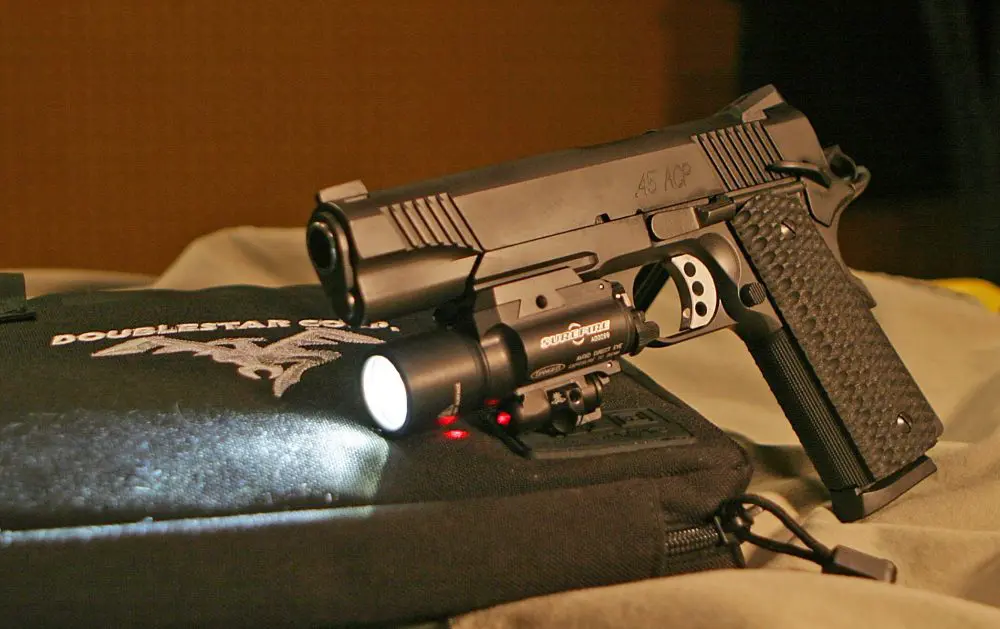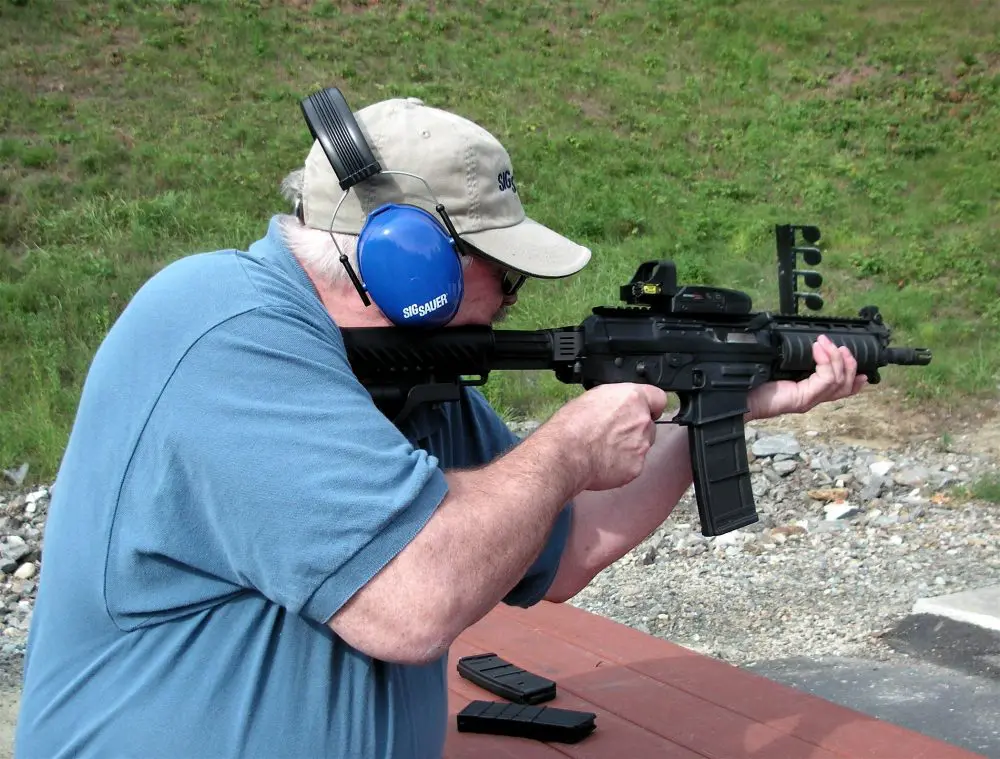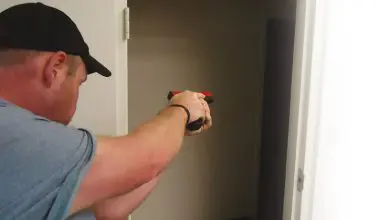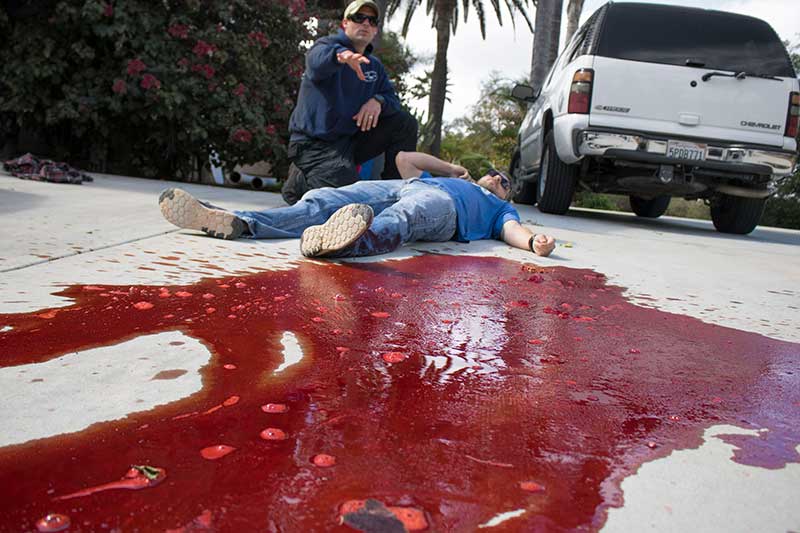
An adult human body contains roughly five liters of blood—five liters that can escape through an artery in less than a minute, affording most bystanders merely the opportunity to watch a person bleed to death.
Not me.
In January 2018, I attended the XSA International Emergency Life Saver course, where students learn how to perform cardiopulmonary resuscitation (CPR), operate an automated external defibrillator (AED) and, most importantly, combat “the five killers,” starting with massive bleeding.
When I arrived in Vista, California, I expected a course of theory and disinfected practice—one of those two-day classes spent handling limbless, unmoving manikins. I was actually in line for an emotional roller-coaster.
As I walked into class confident and caffeinated—ready to join the well-respected group of both concealed-firearm and Red Cross certificate carriers—I was immediately approached by XSA’s founder and lead instructor, Chris Stoehner, also known in the industry as “Doc.” “Welcome to XSA’s ELS course!” he said, reaching to shake my hand with striking energy.
Chris Stoehner is more than qualified to teach this course. He served three years as a Navy Corpsman during the Global War on Terror. Since his end of active service in 2006, Stoehner has worked 11 years alongside New Mexico’s Lake Arthur Police Department as a tactical EMS Sergeant.
Table of Contents
XEROCOLE SECURITY AND ASSURANCE
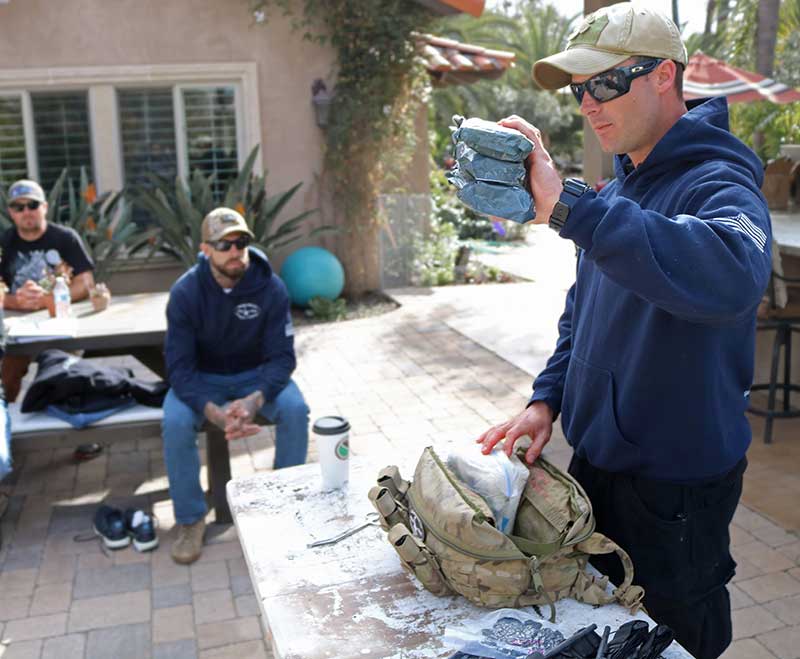
Stoehner began the class by saying, “Students often ask me, ‘What does XSA stand for?’ ” I was wondering the same thing. “Xerocole Security and Assurance. Xerocole are animals that can withstand the harsh conditions of a desert environment. They can handle lack of food and water for prolonged periods of time and regardless of circumstances. These creatures are going to survive and resist.” Survival and resiliency would be recurring themes throughout the course.
“Why should you take this course?” Stoehner asked. Many mentioned the increasingly dangerous world we live in: incidents of terror, mass shootings, raging violence. Stoehner smiled. “What about car accidents? Driving a car is probably the most dangerous thing you’ll ever do. Can you think of other examples? Of course. It can be anything—hiking, climbing, cycling, or slipping on ice. The odds of you rolling and twisting an ankle, or taking a nasty fall out mountain biking, are far greater than any acts of terror.” He earned our full attention.
Stoehner continued to engage us: “What does scene safety mean?” Many hands went up. “You’ve got to be aware of your surroundings. Remember, at the end of the day, you owe it to yourself and your loved ones to come back home. And if something happens to you, you are now a casualty and you can no longer help anyone. So don’t put yourself in unnecessary jeopardy.”
For another hour, we covered terminology and first-aid fundamentals, such as the primary means of determining whether one is safely unconscious or requires immediate attention, the different approaches to adult versus infant care, and more.
FIRST TASTE OF STRESS
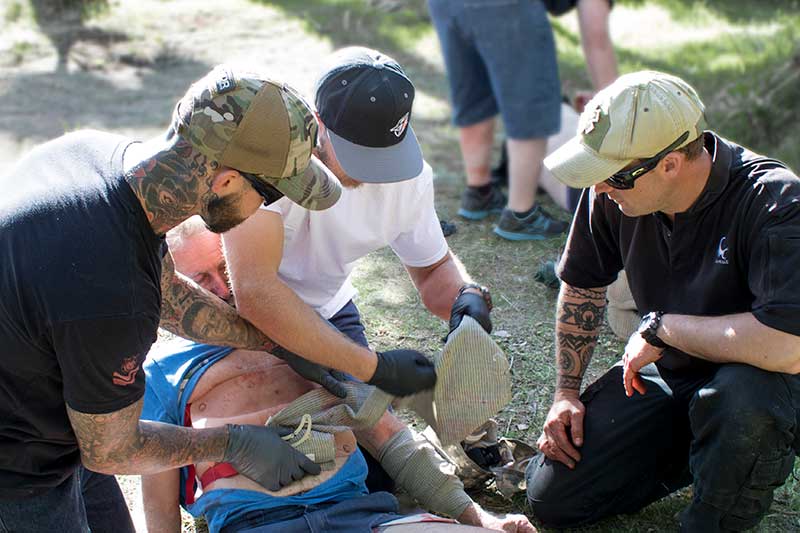
Armed with life-saving knowledge, it was time to get our hands gloved and artificial hearts pumping. “First responders up!” Sharing a handful of adult and infant manikins, we took turns applying rapid compressions, keeping an eye on a blinking red light that indicated sufficient force—a force powerful enough to crack, or even break, ribs.
Around us AED devices instructed, “60 seconds of CPR remain”—believe me, a minute can last forever. “Clear!” I motioned a safe perimeter around the casualty and sent a simulated shock through the vinyl torso. I repeated the process on an infant, and back on an adult, and realized the demanding nature of CPR. Two hours later, we found our seats.
The Committee for Tactical Emergency Casualty Care (C-TECC) identifies five primary killers. “Massive bleeding is the number one killer,” Stoehner said as he unlocked a hefty container bursting with first-aid implements. “But we can combat it using approved tourniquets, hemostatic agents, and pressure bandages.”
Each of us inspected the different anti-hemorrhagic systems and began memorizing their purpose, application, and relative efficacy. “If the only thing you can do for somebody is stop their bleeding, you have bought them a tremendous amount of time.” And there’s very little time.
“One-one-thousand! Two-one-thousand!” Stoehner’s voice filled the room. I clumsily tightened a CAT tourniquet around my leg. “Six-one-thousand!” Each second signified more of my life drained. Ultimately, I lost too much blood, but I noticed my leg turn cool and numb. “Can you feel a pulse?” Stoehner asked. I reached by my ankle and felt nothing, which meant I had successfully occluded my blood flow. In this case no pulse means a life saved.
Stoehner continued to review the other four life-threatening circumstances, which include compromised breathing and a blocked airway, and before we knew it, eight hours had passed. “Tomorrow we’ll get our hands dirty in hyper-realistic scenarios.” Sounds fine, I thought.
FULL-ON SCENARIO TRAINING
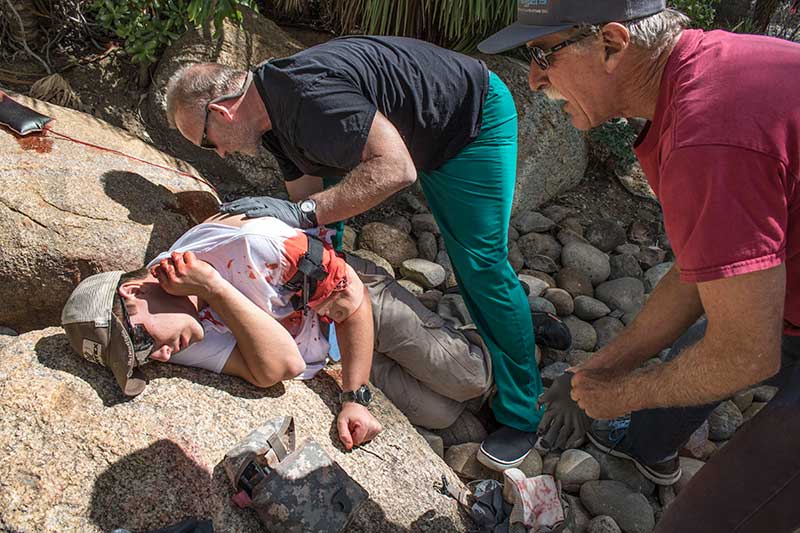
The next day I figured the scenarios couldn’t be that bad. After all, I knew it was all staged, and the blood and injuries weren’t real. What’s more, the day before, I’d taken plenty of notes and navigated injuries in my mind’s eye. I was thoroughly prepared. But when I heard Stoehner shout, “BANG, BANG, BANG!” behind a building 100 yards away, I noticed a sudden swelling in my chest.
I ran to the scene with four other responders. We located five casualties lying on the ground in various positions, suffering from different injuries and gun wounds—some of them catastrophic—and screaming for help. Screaming at me.
I randomly picked a casualty and noticed the blood pouring out. “Tourniquet, tourniquet, tourniquet,” I said to myself as I shuffled through my Individual First Aid Kit (IFAK). I finally tightened the band around her leg, forcing a grip while fighting the slippery blood.
I was about to search for additional wounds when I heard a voice, “Think, Tali.” I looked up at Stoehner. “Think.” I scanned the casualty from head to toe, searching her injuries and my memory for the missing link. “Of course!” The leg is different from an arm; a CAT tourniquet must be clasped through the buckle, or eventual loss of tension will occur. I looked up with pride but Stoehner was already gone, prompting others.
AFTER-ACTION REPORT
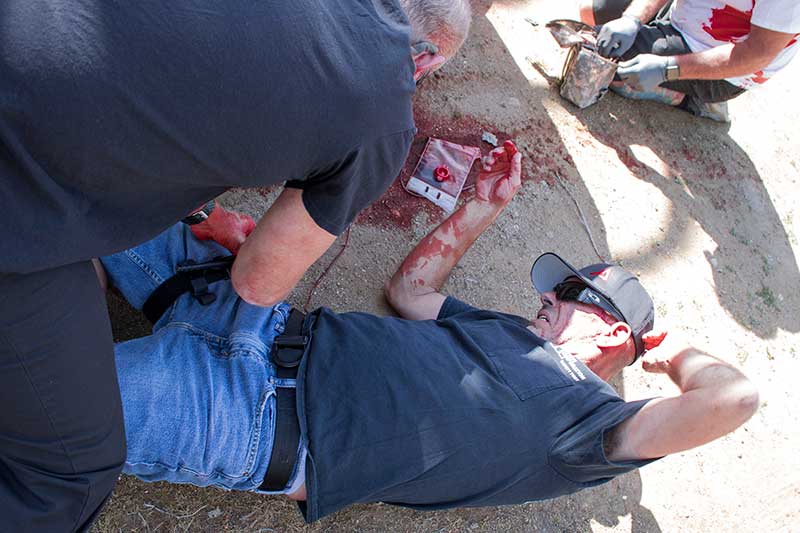
And then, without notice, it was over. We gathered around each casualty and reviewed our performance. I exhaled at how poorly I had fared.
Confronted with a hyper-realistic simulation, I failed to follow the number one rule: protect myself. I never looked for the shooter, and my gloves remained in my IFAK. My hands were soaked with blood, which stained my skin red for the remainder of the course—a continual reminder of my early incompetence.
Worse, approaching my second casualty, I failed to distinguish between a massive bleed and a non-threatening—but alarming—injury. At the time, he was screaming, which shot adrenaline through my veins and diverted my attention from what actually mattered. Lives were lost.
Yet Stoehner believes failure is a necessity. “Everyone’s initial response is of disorientation. We’ve seen people stop dead in their tracks because of the alarming nature of the training.” It was true: Everyone failed.
Those who remembered their gloves forgot to replace them before addressing another casualty, risking transmission of blood-borne diseases. One responder completely forgot the previous day’s lecture and aimlessly searched his medical supplies. Another wrapped gauze around a casualty’s neck, effectively killing him. “However,” Stoehner continued, “as you will see, through multiple exposures and scenarios, each one of you will begin to act much more appropriately.” It was hard to believe.
The debrief lasted for roughly 45 humbling minutes that taught us more than we could have imagined. Then it was our turn to bleed and for others to respond.
MY TURN TO DIE
Sprawled and covered with blood, I lay “unconscious” and waited for aid. My lips were charred with black ink that suggested an explosion. Near me stood one of the assistants, squeezing an IV bag to mimic a massive, pulsating bleed that quickly pooled around my punctured leg. I had little time to live if not immediately addressed.
When the responder approached, I remained unresponsive. A tourniquet was correctly applied to my leg and I wondered if I would have survived. I noticed he failed to wear gloves, and imagined what I would have done had our circumstances been reversed.
Then I felt the cool metal shears cut through my disposable shirt, revealing additional wounds in my abdomen. Ultimately my peer was slow, disorganized, and required numerous prompts to regain equilibrium. Simply put, the first time is overwhelming. And time was up.
During the debrief, we remained motionless—frozen in time—to allow both responders and casualties to experience each case. We learned so much just lying there and noting others’ decisions under pressure. Finally, I felt revitalized, and once again became the responder.
SEVEN MORE SCENARIOS
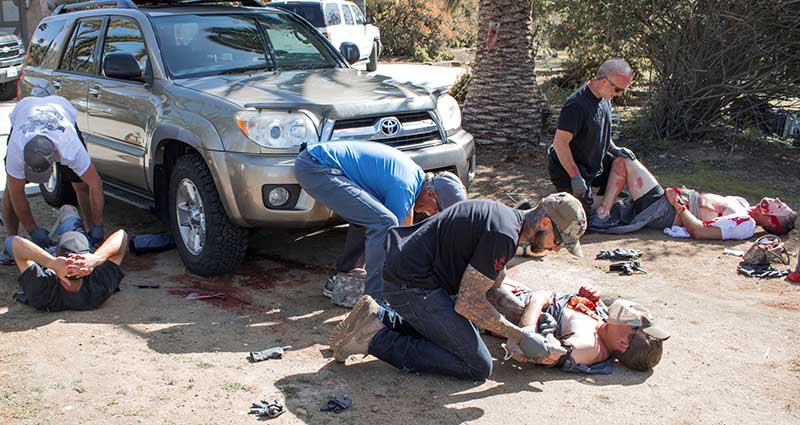
An additional seven scenarios were ahead of us, including a mass shooting, knife attack, car accidents, and more. Each offered new learning opportunities, new challenges, and many lessons that affected us deeply, as though the injuries and trauma were real. Indeed, Stoehner argues that safe, realistic experiences may lessen the paralyzing impact of real-life situations, building resiliency that may save lives and potentially defend against PTSD.
As the day went on and the simulations got worse, Stoehner’s presence began to fade away. He watched us quietly from a distance, smiling as he evaluated our composure and determination. By then, we were working individually and collectively. We were accurate in our early assessments, we were protecting ourselves and saving those in greatest need. We were replacing countless gloves and carrying casualties to safety.
We were responders.
In 20 extensive hours, Stoehner offers a comprehensive curriculum, motivated by military standards yet stripped of needless complexity. His unique approach and instruction enable anyone to become a proficient first-aid responder. Regardless of your interests, your job, or your lifestyle, you owe it to yourself and your loved ones to take this course—to know how to save a life.
I now carry my IFAK everywhere I go. It’s tempting to hope we never have to use the skills we acquired in this course. Yet I hope I do. I hope I am near the worst place at the worst time, as it’s likely I will be the only one capable of responding.
SOURCE
XSA INTERNATIONAL, LLC
www.xsallc.com



